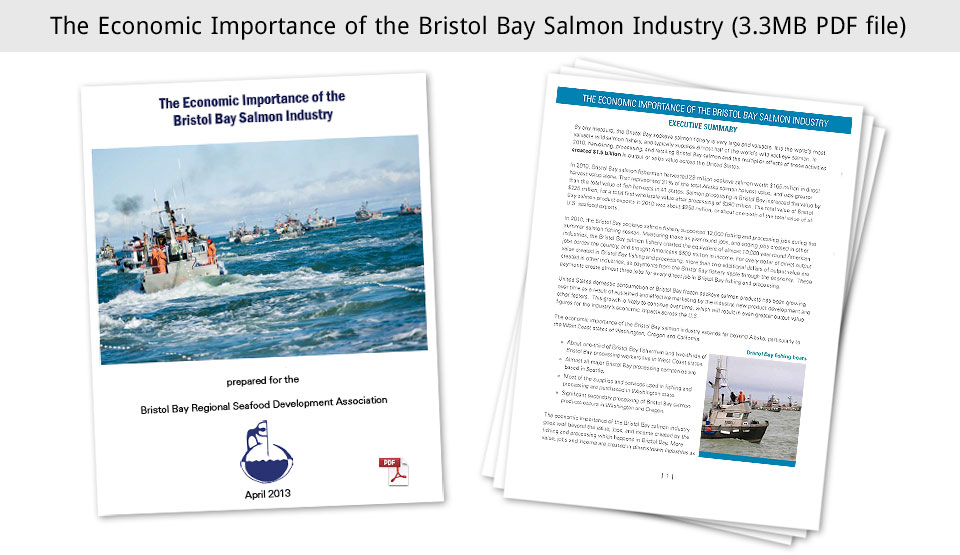Home > Bristol Bay Fisheries > Commercial
Commercial Fisheries
Alaska seafood is tops
The seafood industry provides the most jobs in Alaska -more than oil and gas, mining, timber and tourism combined - and seafood is Alaska's top export.
State numbers show that Alaska's total exports increased by more than 26 percent last year, with a value of $5.2 billion, the highest ever. Half that value came from seafood exports, a 35 percent increase over 2010.
Last year also marked the first year China ranked as the top importer of Alaska products, with seafood topping the list ($836 million). China was followed by Japan, Korea, Germany, the Netherlands, Canada, France, Thailand, Spain and Portugal. Europe accounted for more than 22 percent of Alaska seafood exports last year.
Other Alaska exports included mineral ores, which increased 31.7 percent to $1.8 billion; precious metals (primarily gold), were up 24.7 percent to $266.4 million. Forest products exports increased 1.9 percent to $119.3 million. Energy exports decreased 7.3 percent to $387.7 million.
Information source: http://www.adn.com/2012/04/21/2434909/halibut-bycatch-comes-center-stage.html
Salmon Harvest
Prepared by Dr. Carol Ann Woody, Fisheries Research and Consulting, www.fish4thefuture.com
In contrast to salmon declines elsewhere (link to a new salmon status page), in 2009, over 40 million wild salmon returned to Bristol Bay, Alaska (Figure 1).

Figure 1. Watersheds and communities (white dots) of Bristol Bay, Alaska.
Commercial fishers celebrated their 125th consecutive year of fishing, netting 32.36 million salmon, 30.90 million of which were sockeye salmon (ADFG 2009). Bristol Bay is one of the most valuable commercial fisheries in the U.S. (Burgner 1991; NMFS 2010) and is one of the few certified as sustainable (MSC 2009). During 1950 to 2008, U.S. commercial sockeye salmon landings were valued at about $7.9 billion dollars with about half that value attributed to Bristol Bay stocks (Figure 2).
FOR MORE INFORMATION
Alaska Department of Fish & Game Commercial fisheries:
http://www.adfg.alaska.gov/index.cfm?adfg=fishingcommercial.main
Bristol Bay salmon:
http://www.adfg.alaska.gov/index.cfm?adfg=commercialbyareabristolbay.salmon
|

